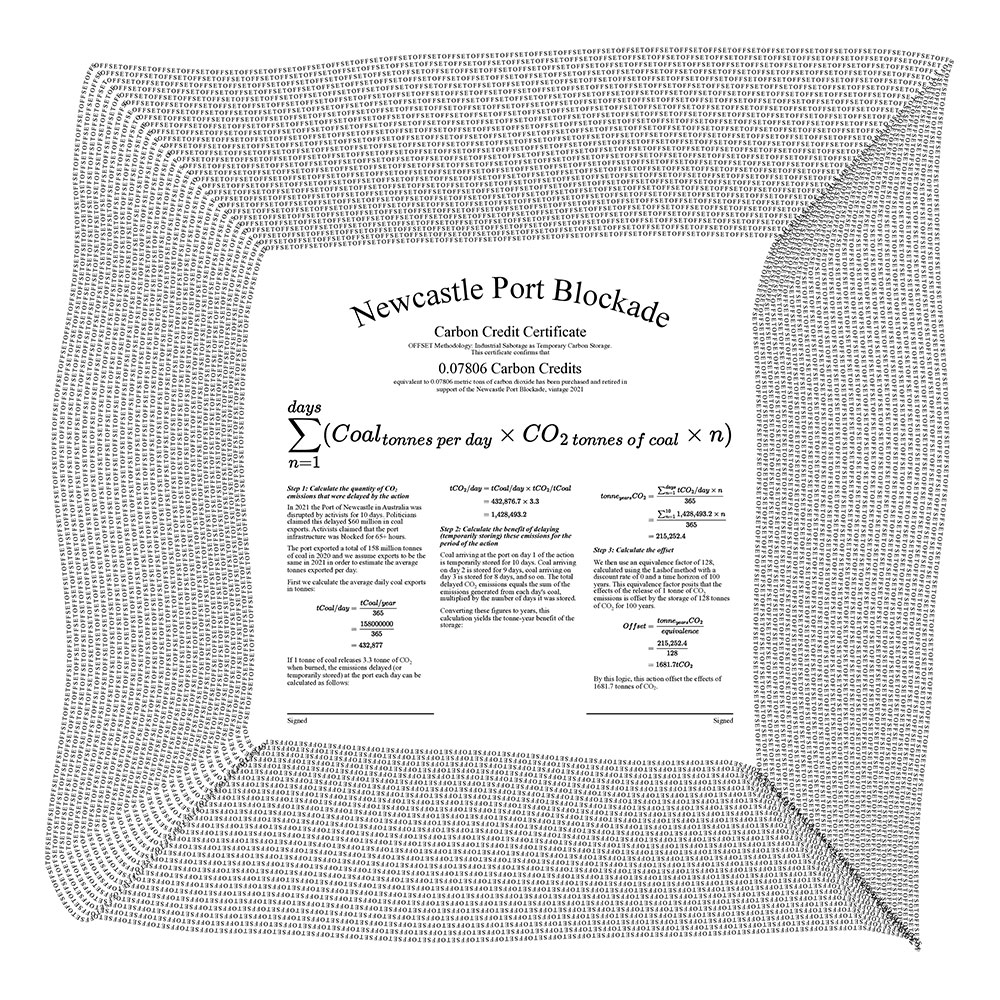Newcastle Port Blockade
 $200 carbon credit certificate retiring 0.07806 tons of CO2
$200 carbon credit certificate retiring 0.07806 tons of CO2

Methodology
Step 1: Calculate the quantity of CO2 emissions that were delayed by the action
In 2021 the Port of Newcastle in Australia was disrupted by activists for 10 days. Politicians claimed this delayed $60 million in coal exports.2 Activists claimed that the port infrastructure was blocked for 65+ hours.3
The port exported a total of 158 million tonnes of coal in 20201 and we assume exports to be the same in 2021 in order to estimate the average tonnes exported per day.
First we calculate the average daily coal exports in tonnes:
If 1 tonne of coal releases 3.3 tonne of CO2 when burned,4 the emissions delayed (or temporarily stored) at the port each day can be calculated as follows:
Step 2: Calculate the benefit of delaying (temporarily storing) these emissions for the period of the action
Coal arriving at the port on day 1 of the action is temporarily stored for 10 days. Coal arriving on day 2 is stored for 9 days, coal arriving on day 3 is stored for 8 days, and so on. The total delayed CO2 emissions equals the sum of the emissions generated from each day's coal, multiplied by the number of days it was stored.
Converting these figures to years, this calculation yields the tonne-year benefit of the storage:
Step 3: Calculate the offset
We then use an equivalence factor of 128, calculated using the Lashof method with a discount rate of 0 and a time horizon of 100 years.56 This equivalence factor posits that the effects of the release of 1 tonne of CO2 emissions is offset by the storage of 128 tonnes of CO2 for 100 years.
By this logic, this action offset the effects of 1681.7 tonnes of CO2.
-
https://www.abc.net.au/news/2021-01-15/newcastle-coal-exports-continue-to-new-markets-amid-china-ban/13060130 ↩
-
https://www.theguardian.com/australia-news/2021/nov/17/blockade-australia-anti-coal-activists-vow-more-disruption-despite-warnings-of-25-year-jail-sentences ↩
-
https://www.blockadeaustralia.com/category/action-updates/newcastle/ ↩
-
https://360energy.net/how-does-using-energy-create-carbon-emissions/ ↩
-
Chay et. al. calculate this equivalence factor using Lashof here: https://carbonplan.org/research/ton-year-explainer ↩
-
Fearnside et. al. (2000) Accounting for time in mitigating global warming through land-use change and forestry. Mitigation and adaptation strategies for global change. ↩